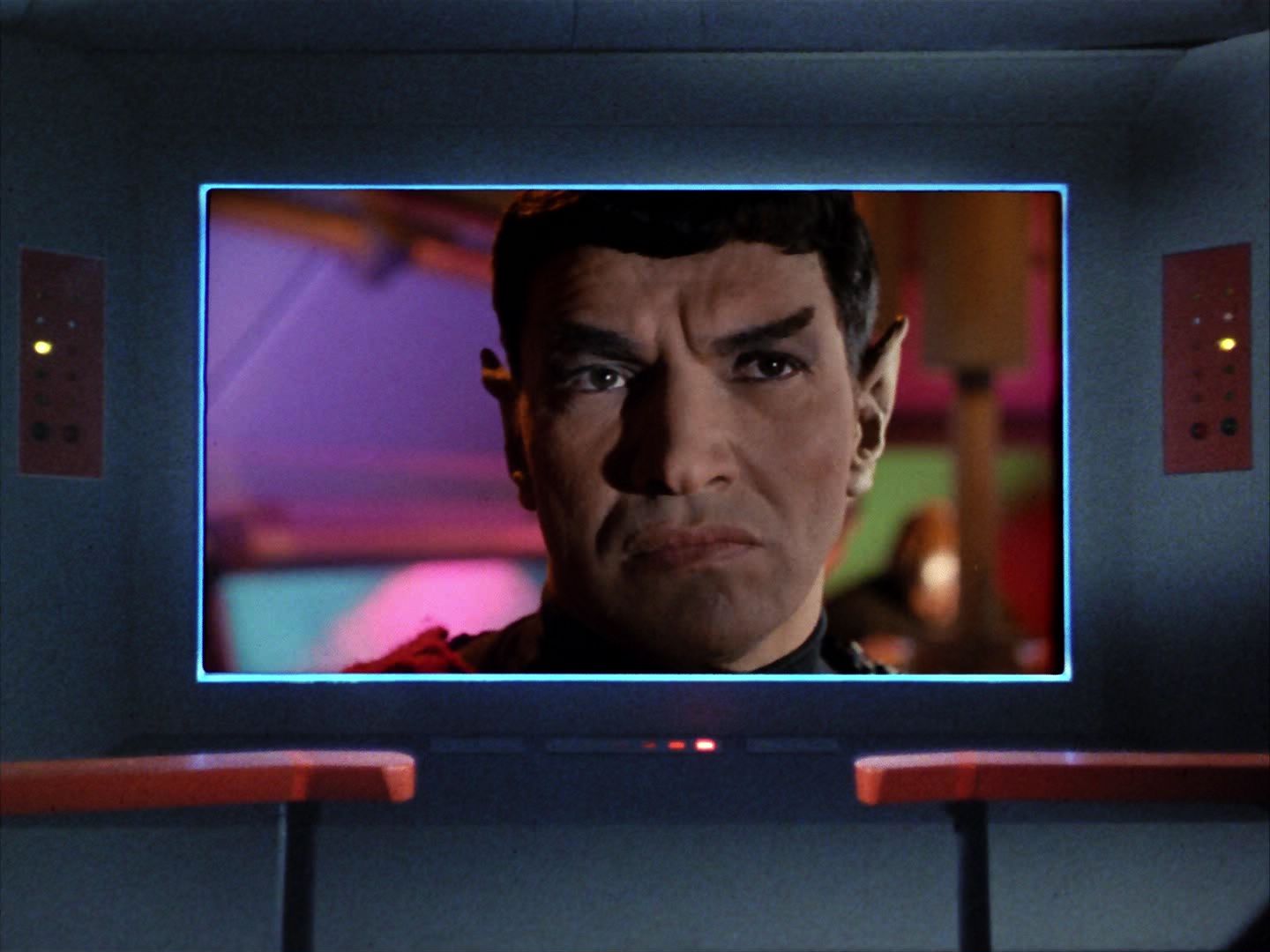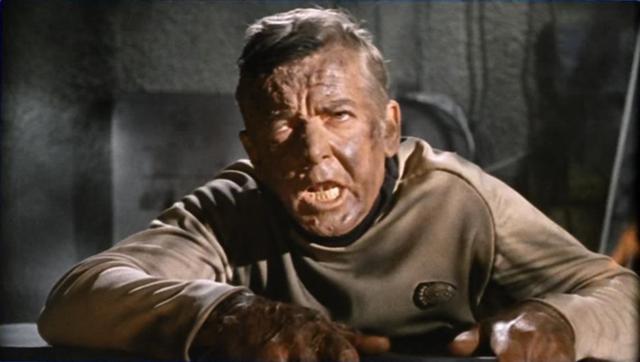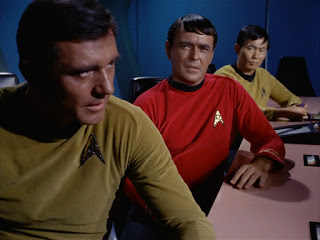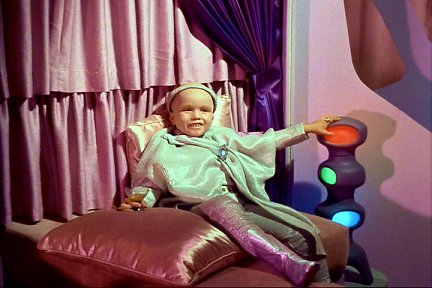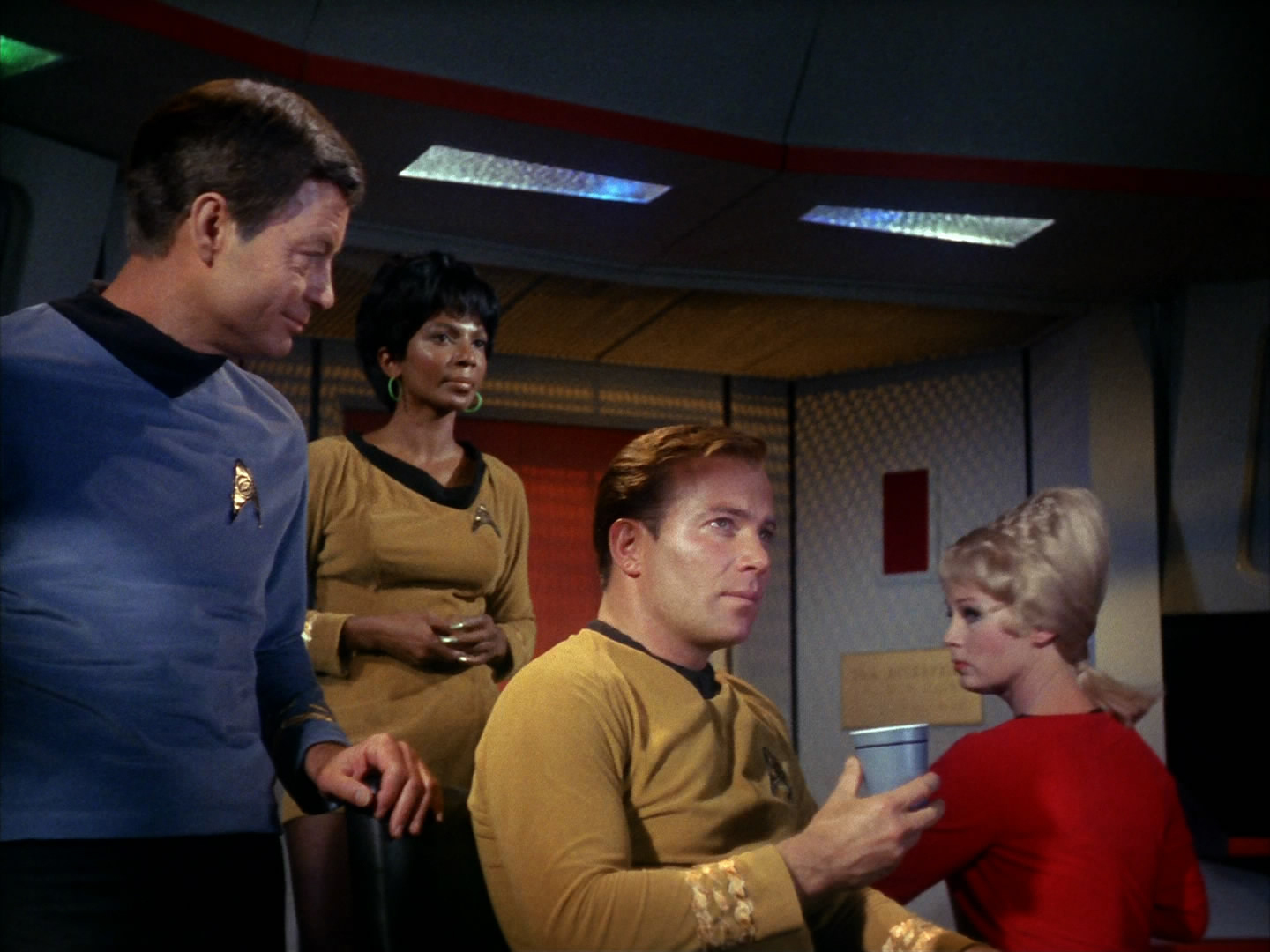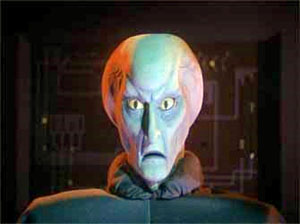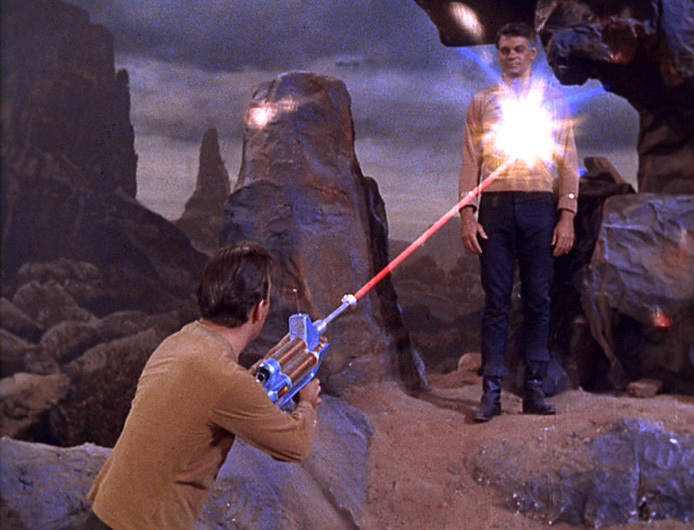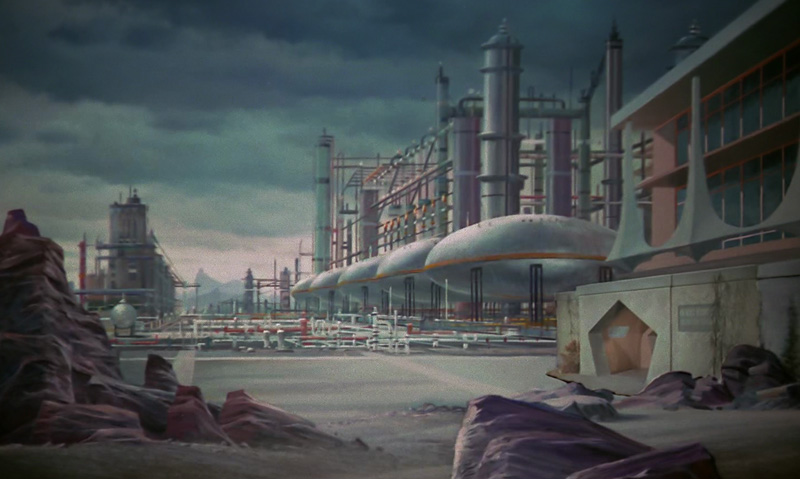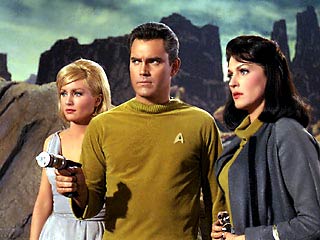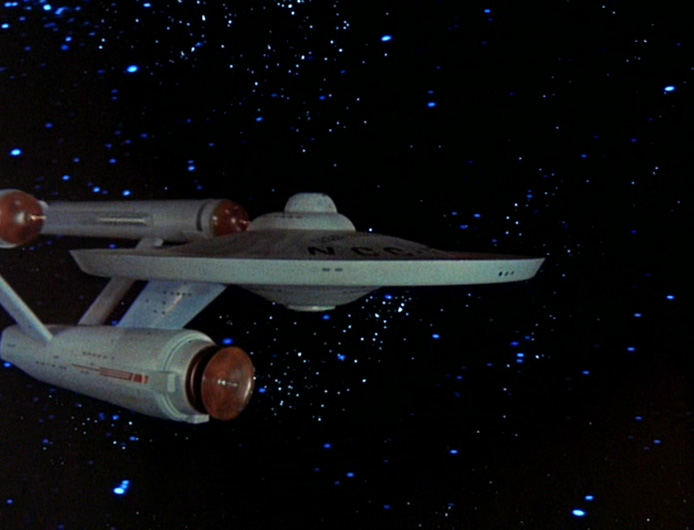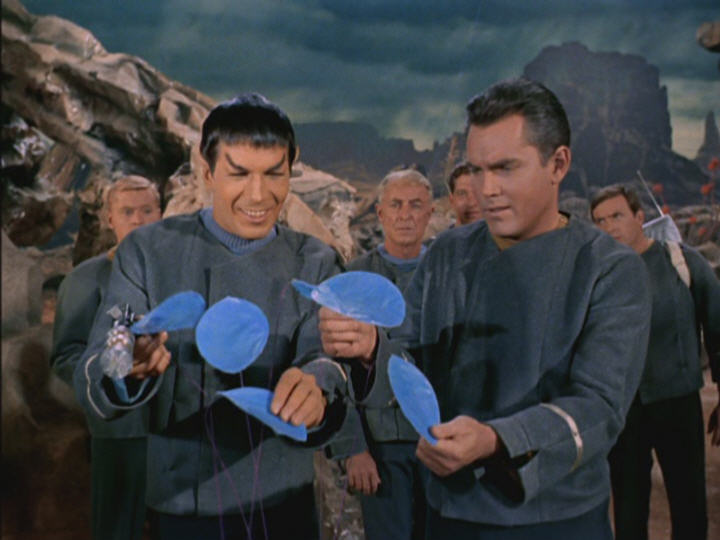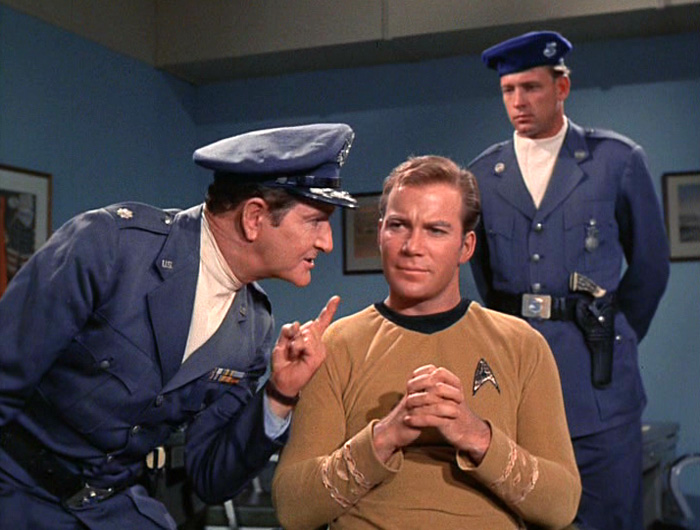
An accident hurls the Enterprise back in time to Earth, circa 1969, where it’s spotted in the atmosphere by an Air Force pilot sent to investigate a report of a UFO. Kirk accidentally crushes the plane with a tractor beam (good one, Jimmy) and is forced to beam the pilot, Captain John Christopher (Roger Perry) aboard. Kirk and Spock must deal with Christopher in a way least damaging to the timeline. They’ve also got to find a way to get the Enterprise and her crew back home. After initially determining Christopher isn’t historically relevant — which Spock TELLS Christopher in a kind of harsh scene — the crew later learns Christopher’s unborn son will be historically significant, so he needs to go back, Jack Shephard-style. The crew first must recover some photos from Christopher’s plane, leading to Kirk briefly getting captured at an Air Force base. After rescuing Kirk, the crew determines they can slingshot the ship around the sun to go back in time (or something) to return Christopher and a security guard they beamed up during the photo-recovery mission and then get back to their own time.
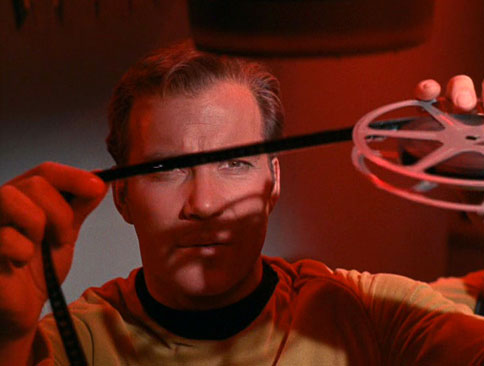
Why it’s important
Other than the goofy business at the end of “The Naked Time” — which, kinda probably could have been part one of this episode — this is the franchise’s first foray into time travel. Admittedly, it’s questionable as to whether this is enough to make the episode historically important under this site’s guidelines — would a history text about Star Trek include this incident or even be able to record it? — but it’s significant in a creative sense. Without this episode, one wonders if we’d have seen classics such as “The City on the Edge of Forever,” “Yesterday’s Enterprise” or “The Visitor.” Of course, it would have likely saved us from the Temporal Cold War nonsense on Enterprise, but you take the good and you take the bad, as Mrs. Garrett would say.
Even if this episode is borderline significant, it’s extremely interesting to watch Kirk and Co. as they get their arms around what kind of roles they might play if they interfere with the timeline. It’s almost on an elementary level. Once Christopher’s aboard the Enterprise, Kirk lets him just walk the ship — something that later captains likely would have prohibited. Spock actually has to point out to Kirk why letting Christopher see so much is a problem! Later, Spock only has the presence of mind to check for Christopher’s name in the historical records, and not his offspring. This is something that Kirk and Spock would have been all over even by the second season, but here, they really don’t get it yet.
Oh, and of course, the method for time travel seen here is what we (mostly) see in “Star Trek IV: The Voyage Home”.
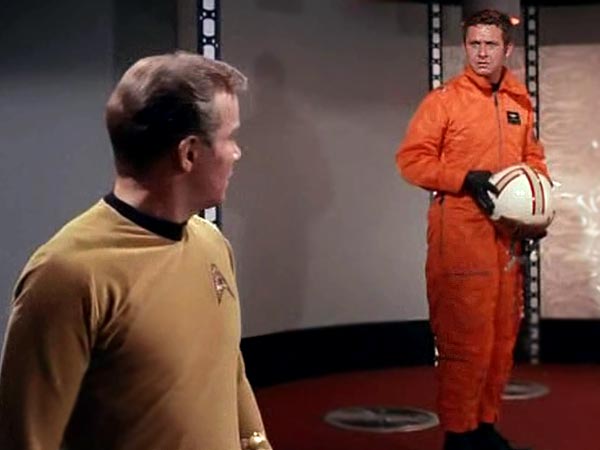
What doesn’t hold up well
This episode shows another example, or a possible example, of how the Star Trek creators were overly optimistic about how far mankind would get in the latter part of the 20th century when it came to space travel. Christopher’s son, Sean, turns out to be historically significant because he was on the first mission to Saturn. Now, as of this writing, there are no plans for that to happen.
It’s, of course, possible that Sean was born much later in Christopher’s life — say, 30 years after the events of this episode. That would make Christopher about 60 when Sean would have been born and Sean about 15 as of this writing. That means Sean could end up being on a mission to Saturn sometime after 2025 or so.
Regardless, the big question is, how likely is it that man will send anyone to Saturn sometime in the next 30 years? Based on the scuttling of the shuttle program in the early 2010s, I’d say it’s pretty unlikely. And based on events from other episodes — notably Khan leaving Earth in a fairly sophisticated spacecraft in 1996 — I doubt the creators were expecting Sean’s mission to take place so late in the 21st century. The idea almost certainly was that Sean would be born relatively soon after this episode and been involved in a mission to Saturn before the end of the 20th century.
The other big issue in this episode is the ending. Putting aside the slingshot business and the logistics of the final scene — if the Enterprise is traveling at warp, how does it have several minutes to beam Christopher and the security guard to Earth? — why was it necessary to beam them both down? Shouldn’t they just have vanished from the Enterprise when Christopher’s plane wasn’t destroyed? Shouldn’t the Christopher in the jet have been the one to stay? And, where did the one who was in the cockpit go? Same question for the guard.
Like I said: The creators were clearly getting their arms around time travel here.
Final thoughts
I know I’m being hard on an episode that almost deserves pilot-level (no pun intended) treatment. In all honesty, I like “Tomorrow is Yesterday” a lot. Nimoy found the right notes as Nimoy and particularly Shatner might have turned in one of his best performances. His scenes with Christopher are great, and the interrogation where Kirk calmly refuses to provide any information to the Air Force officers who captured him was pitch-perfect. Gregarious-but-authoritative Kirk is one of the things Shatner did very well. He doesn’t bark at Christopher as to why they can’t just send him back to Earth. He explains it calmly, but it’s clear who’s in charge.
And Perry as Christopher is good, too. Granted, he’s a little too composed for someone who’s just been beamed aboard a space ship, learned of alien life and been told he can never go home. But, he’s an interesting character if you swallow he’s that strong a person.
Meanwhile, Kirk and Spock determine where they are at the beginning of the episode when they hear a radio broadcast about the upcoming “man-moon shot,” set to launch on that upcoming Wednesday. This episode, of course, was broadcast in 1967, before Apollo 11 launched — which occurred on Wednesday, July 16, 1969. Apollo 11, of course, was the mission that actually sent men to the moon.
So, while I might have dinged the creators for being too optimistic about man’s long-term progress in spaaace, it’s pretty neat that they nailed it here, even if it was just a stroke of luck to pick the actual day of the week of the launch two years later. Hat tip to our buddies at Mission Log for pointing this very cool detail out.
Last point: This might be one of the very few time-travel episodes reviewed on this site. That’s not because we don’t like those episodes. But in many cases, the metaphorical reset button shows up, meaning the events aren’t historically relevant because they didn’t actually happen. That’s not really the case in this episode — Kirk’s crew retains memories of the events. Still, it was the episode of TOS that gave us the most pause to include in this project.

